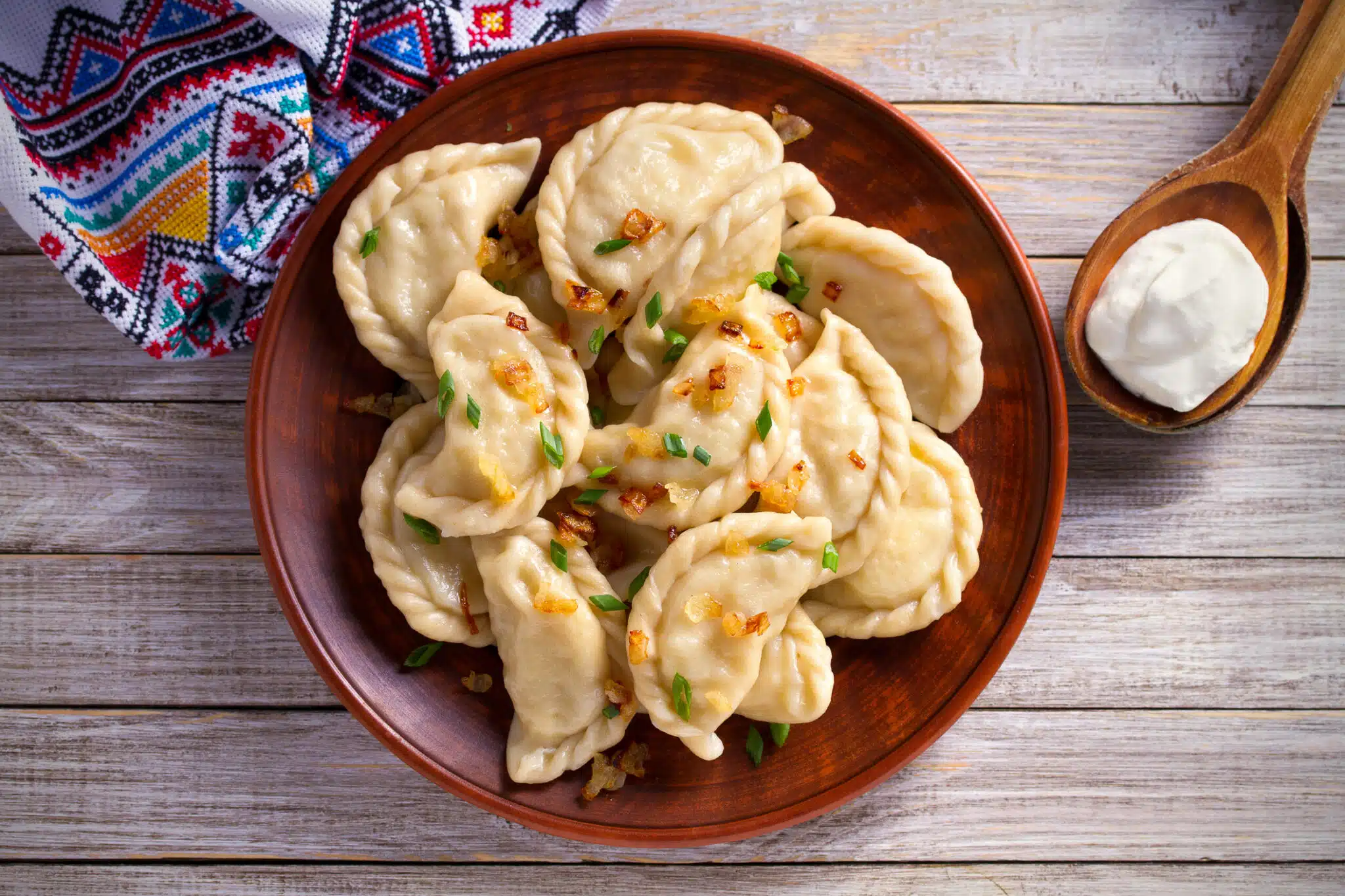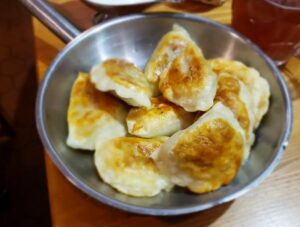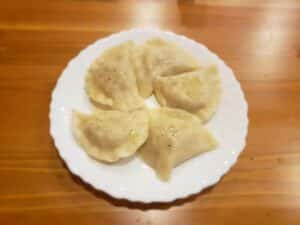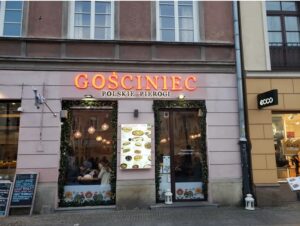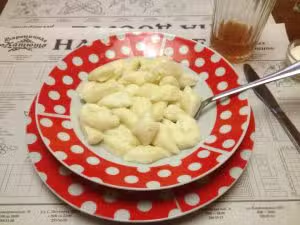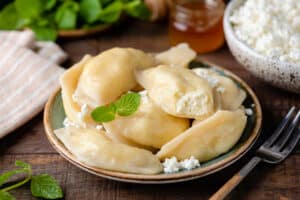The dumplings and pastries of Europe’s northeastern flank have a story to tell. Their recipes, etymologies, and related traditions are intertwined in a complex historical knot. There are so many ancient connections that it is almost impossible to say which influenced the next. And yet, each dish is held up as a unique and integral part of the culture it represents. This article focuses on how these dumplings and pastries became an integral part of national identities across Poland, Ukraine, Latvia, and beyond.
Why They’re Called “Pierogi” and “Varenyky”
The English term “pierogi” is derived from the Polish pieróg, meaning “filled dumpling.” This Polish word in turn has its origins in the Old East Slavic “пиръ” (pirŭ) and Proto Slavic “*pirъ,” meaning “feast.”
Students of Russian may immediately recognize the cognates of пирог (pie) and пирожки (filled pastries), although these foods are baked and feature bready shells. In most Slavic, Baltic, and Nordic languages, in fact, words similar to “pirog” refer to baked pies. For instance, Latvian uses “pīrāg” or “pīrādziņi,” while Finnish uses “piirakka,” and Ukrainians say “pyrizhka.”
Ukraine’s national dumpling, which is almost indistinguishable from the Polish pieróg, is most often referred to as a “varenyk,” a word that comes from “varyty,” a Ukrainian word meaning “to boil,” which clearly indicates that the end product is a dumpling rather than a pastry. However, in western Ukraine, varenyky are often referred to as “pyrohy,” closer to the Polish original. Slovakia also uses the word “pirohy” for dumplings.
Lastly, one other common dumping name is “kalduny,” which is used in Belarus, and “koldūnai,” used in Lithuania. Both of these derive from the Slavic word for sorcerer and it is not entirely clear how the name got applied to the food. The fact that Polish uses the word “kołduny” specifically to refer to dumplings served in soup, however, may give some hint; a common test for witches and sorcerer in the Middle Ages was to throw them in a pond to see if they would float.
Myths and History Behind Pierogi
Pierogi are dumplings and considered Poland’s national dish. They consist of a dough case, usually formed into a semi-circle and stuffed with either sweet or savory fillings, such as potatoes, cheese, meat, mushrooms, or fruit. They are boiled and then sometimes fried before serving.
The recipe for pierogi was first recorded in Stanisław Czerniecki’s 1682 Compendium Ferculorum, the first cookbook written originally in the Polish language. This book included many dishes that are particularly beloved by Poles. As with most first records, the dish was most certainly around for much longer before being officially documented.
Pirogi are dumplings, one of the world’s oldest and most common foods. Archeologists have uncovered evidence of dumplings being consumed – and used in burial rites – in China some 1700 years ago. Many food historians have traced the origins of the dumpling from there to locations throughout Asia, where manti, pozi, and bauzi, for instance, are very similar, and Europe, where variants such as Russian pelmeni and Italian ravioli exist. Some believe that the Mongols or Tatars brought the food originally to Eastern Europe.
Indeed, there are several myths that link pierogi to a 13th century Polish Dominican monk named Saint Hyacinth (also known as Jacek Odrowąż). In one of these myths, he is gifted pierogis after he delivered the people of Krakow from starvation after the Mongol invasion of Poland in 1240-41. However, our knowledge of Hyacinth’s life comes to us from the 14th century De vita miraculis sancti Jacchonis (The Miraculous Life of Saint Hyacinth) by Lector Stanislaus, which does not specifically mention pierogi. That detail seems to have been added in later through folk retellings of the tale.

Saint Hyacinth has become inextricably connected with pierogi in Polish national thought, however. The 16th century Krakowian Dominican priest, Father Felix of Sieradz, is attributed with the now colloquial phrase Święty Jacku z pierogami!, which translates as “Saint Hyacinth with his pierogis!”. This is a phrase usually used in supplication for help during hard times but is also used as an exclamation during trivial or slightly annoying situations. Samuel Adalberg, a well-known Polish folklorist and paremiologist (a person who studies proverbs), identified several proverbs linking Saint Hyacinth to flour-based dishes, including pierogis, in his 1890 book Księga Przysłów Polskich.
Further claims have been made about the dish’s origin, include those by Magdalena Gessler, a Polish celebrity cook, who states that Saint Hyacinth traveled to Kyiv during his life, fell in love with the dish there, and brought it back to Krakow in Poland.
However the history may have played out, whether they came to Poland via the Mongols or from Kyiv, pierogi are now an intractable part of Polish cuisine and identity. Pierogi are an old Polish dish and are consumed nearly everywhere the Polish-Lithuanian Commonwealth once ruled – and especially in Poland, Belarus, Ukraine, Slovakia, and Lithuania. Pierogi can also be found across the globe, especially in cities with a large Polish diaspora.
How and When They Are Eaten
Due to their ubiquitous cultural status in their respective countries, pierogi, pīrāgi, and varenyky have become customary dishes to consume for a variety of events and occasions as well as for everyday meals.
For example, sanież or socznie, a sweet version of Polish pierogi, are often eaten at name-day parties or on birthdays, and uszka (lit. “little ears”), are filled with mushrooms and served alongside barszcz (borsch) on Christmas Eve (Wigilia). They are also often eaten for Easter (Wielkanoc) and some other Polish holidays.
In Ukraine, varenyky have much the same status. They are one of the 12 dishes that constitute the sacred Christmas dinner. They are also the main dish for Masnitsya, an ancient pagan holiday that celebrates the coming of spring and remains an integral part of the Ukrainian holiday calendar. Varenyky with farmer’s cheese are most common for these holidays.
In Ukraine, varenyky have much the same status. They are one of the 12 dishes that constitute the sacred Christmas dinner. They are also the main dish for Masnitsya, an ancient pagan holiday that celebrates the coming of spring and remains an integral part of the Ukrainian holiday calendar. Varenyky with farmer’s cheese are most common for Ukrainian holidays.
Meanwhile, speķrauši is a prized element of Latvian national cuisine eaten for almost every major Latvian holiday: Christmas, New Year, Easter, the wildly popular midsummer Jani festival, and more. Speķrauši, the name of which translates to “bacon roll” are a specific type of baked pīrāgi and are sometimes called “speķa pīrādziņi.”
Both Ukraine and Poland have festivals that celebrate their dumplings. For instance, Krakow has an annual festival that fall, appropriately enough, on around August 17 for the Feast of Saint Hyacinth. A pierogi contest is held with the best chef being awarded a statuette of the saint. Varenyky festivals have traditionally been held in smaller Ukrainian towns, often as a way to draw tourism. Festivals are also held abroad by diaspora communities. For instance, such pierogi festivals are held in Whiting, Indiana (very near Chicago) and Pittsburgh, Pennsylvania and New York and Minneapolis regularly host varenyky festivals in the US.
The dumplings are often considered meals in themselves and both Ukraine and Poland have cafes entirely devoted to them. In Poland, they are known as pierogarnie. In Ukraine, such a café is called a “varenichnaya.” These can be found in Poland, Ukraine, and abroad, often with a seemingly endless varieties of the dumplings on offer.

Speķrauši, perhaps because they are usually part of a wider meal, do not have such specialized cafes or even, it seems, festivals. However, a vast array of frozen or refrigerated pierogi, varenyky, and speķrauši can be bought and warmed at home – although, of course, fresh are always best.
Speķrauši are generally eaten as finger food. Meanwhile, pierogi and varenyky are often accompanied by several garnishes, such as sour cream, chives, and onions, fried or freshly diced. Cracklings, or pieces of fried bacon or backfat, are also common toppings.
The sheer variety of condiments and drinks that can accompany pierogi speaks to the dish’s versatility. For example, pierogi is often served in pierogarnie with hot beer, but crisp white wines such as Riesling, Viognier and Sauvignon Blanc are also appropriate. Other side-dishes served alongside pierogi include sos grzybowy (mushroom sauce) or other condiments, from garlic sauce and bechamel to chocolate sauce and cranberry relish. More gourmet versions can include braised sauerkraut and forest mushrooms, especially during the autumn and winter months.
Pairing speķrauši with one of Latvia’s wonderful beers is also a recommended (if not obligatory) choice!
How Do You Correctly Cook Pierogi, Pīrāgi, and Varenyky?
The recipes for perogi, varenyky, speķrauši are actually quite similar. One starts by rolling out dough (yeasted if you are making baked pies and unleavened if you are making dumplings). Then, cut the dough into circles (often with a drinking glass). Then, filling is placed in the center and circle is simply folded over and either pinched together or, more traditionally, sealed by pressing the edges together with a fork. Likewise, molds are also sold that can help you press out the dumplings quickly.
Pīrāgi such as speķrauši are then baked. Dumplings can be either boiled, or par-boiled and then fried.
For fillings, there seems to be unlimited possibility when it comes to the flavor profile of your dumplings or pīrāgi with such examples as jalapeño pierogis or even vegan Big Mac pierogis making the cut.
Varenyky and pierogi can be filled with nearly anything from meat to potatoes to cheese, fish, fruit, berries, and more – either alone or in various combinations. Slovak pirohy use a potato-based dough wrapped around salty brinza cheese.
Pierogi ruskie, often considered the mainstay of the Polish pierogi family, and are made with potatoes and twarog, or farmer’s cheese (known in Russian as “tvorog“). Poland is also an excellent example of regional variation within a country. Pierogi z łososiem is made with salmon and is eaten widely in lake-laden Masuria (Mazury in the Polish) in the North-East, and on the coast of the Baltic Sea. Pierogi kaszubskie originate in the North-West region of Kashubia (Kaszuby), this pierogi is filled with goose paste, commonly known as obona, which is made by grinding up raw goose meat and skin, adding garlic, herbs, and seasoning, and cooking it with melted goose fat in a stoneware pot.
Pierogi lubelskie is a rather eclectic variety, originating in the South-Eastern city of Lublin, and involves a filling of buckwheat, mint, bacon, and onions. Buckwheat-based fillings, in fact, feature in many of the oldest recorded recipes for pierogi, meaning that trying this should be high on the list of any true foodie. We’ve included a recipe below.
Varenyky tend to be the same half-moon shape always. However, there are some members of the pierogi family that differ in shape and size. For instance, uszki, (lit. “little ears”), often served at Christmas Eve, resemble Russian pelmeni (whose name is likely derived from the term “bread ear” in Uralic languages).
There is also pierogi leniwe (lit. “lazy pierogi”), which omit having to cut and fill the dough by just squishing the twarog into the dough and dropping small handfuls into boiling water. The result is akin to the Italian gnocchi.
 |
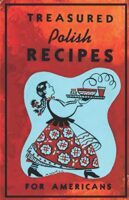 |
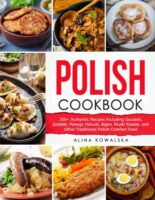 |
 |
For more on Polish cooking keep exploring this site or try some of the great resources above!
Let’s cook!
Traditional Lublin Polish Pierogis
Ingredients:
For the stuffing:
- 100g buckwheat groats (or millet)
- 1 large onion
- 500g cottage cheese (semi-fat or fatty)
- 250g smoked bacon or bacon
- 150g cream
- salt and pepper to season
For the dumplings:
- 400 g of wheat flour
- warm water
To cook and serve:
- Large pot of boiling water
- Your choice of sour cream, cracklings, and/or fresh herbs.
Instructions:
For the filling:
Cook the buckwheat groats or millet (you can cook it the day before, because it must have time to cool).
Peel the onion and chop finely.
In a frying pan, fry the diced bacon. Add and sauté the onion.
Mix the groats, cottage cheese, onion, and bacon and pass them through a meat grinder.
Stir sour cream into the stuffing mix, season with salt and pepper.
For the dough:
Gradually add warm water to the sifted flour, just enough to make the dough elastic.
Wrap in a clean cloth and set aside.
After about a dozen minutes, roll out the dough, cut out rings with drinking glass or cookie cutter.
Place about spoonful of filling in each circle and press the edges of the dough together with your fingers or a fork.
Cook and serve:
Place the assembled dumplings into boiling water. Cook until they float.
Drain them.
Add sour cream, cracklings, and/or chopped herbs to the top.
Serve and enjoy!
Traditional Latvian Speķrauši
Ingredients:
For the dough:
- 500 g (4 cups) all-purpose flour
- 250 ml (1 cup) warm milk
- 100 g (7 tbsp) unsalted butter, melted
- 1 egg
- 1 tbsp sugar
- 1 tsp salt
- 7 g (2 ¼ tsp) dry yeast or 25 g fresh yeast
For the filling:
- 250 g (9 oz) smoked bacon, finely diced
- 1 small onion, finely chopped
- Black pepper, to taste
For glazing:
- 1 beaten egg yolk
Instructions:
For the dough:
In a small bowl, mix the warm milk with sugar and yeast. Let it sit for about 10 minutes until it becomes frothy.
In a large mixing bowl, combine the flour and salt. Add the melted butter, egg, and activated yeast mixture.
Knead the dough for about 10 minutes until smooth and elastic. Cover with a cloth and let it rise in a warm place for about 1–1.5 hours, or until doubled in size.
For the filling:
In a pan, fry the bacon on medium heat until it starts to release fat. Add the chopped onion and cook until soft and translucent.
Season with black pepper and let the mixture cool.
Assemble the speķrauši:
Preheat the oven to 180°C (350°F).
Roll out the dough to about 3 mm (⅛ inch) thick and cut out circles (about 7–8 cm in diameter) using a glass or cookie cutter.
Place a small spoonful of bacon filling in the center of each circle. Fold the dough over the filling and pinch the edges firmly to seal.
Place the filled pastries seam-side down on a baking sheet lined with parchment paper.
Bake:
Brush the tops with beaten egg yolk for a golden finish.
Bake for about 15–20 minutes or until golden brown.
Serve and enjoy!
Let them cool slightly before serving.
Traditional Ukrainian Varenyky with Tvorog
Ingredients:
For the dough:
- 500 g (4 cups) all-purpose flour
- 1 tsp salt
- 1 egg
- 250 ml (1 cup) warm water
- 2 tbsp vegetable oil or melted butter
For the filling:
- 500 g (2 cups) tvorog (farmer’s cheese or well-drained ricotta)
- 1 egg yolk
- 1 tbsp sugar (optional, for a slightly sweet version)
- ½ tsp salt
For serving:
Your choice of sour cream, honey, jam, butter, sugar, and/or fresh dill.
Instructions:
For the dough:
In a large bowl, mix the flour and salt.
Make a well in the center and add the egg, warm water, and oil.
Mix and knead the dough for about 10 minutes until smooth and elastic.
Cover with a cloth and let it rest for at least 30 minutes.
For the filling:
In a bowl, mix the tvorog, egg yolk, salt, and sugar (if using).
Mash well with a fork until combined. The mixture should be creamy but not too wet.
Assemble the varenyky:
Roll out the dough on a lightly floured surface to about 2 mm (⅛ inch) thick.
Use a glass or cutter (about 7–8 cm in diameter) to cut out circles.
Place a teaspoon of filling in the center of each circle.
Fold the dough over to form a half-moon shape and pinch the edges tightly to seal.
Boil:
Bring a large pot of salted water to a boil.
Drop the varenyky in and stir gently to prevent sticking.
Cook until they float to the surface, plus 1–2 minutes.
Remove with a slotted spoon and toss with butter.
Serve and enjoy!
Serve hot with sour cream and/or butter.
For a savory version, garnish with fresh dill.
For a sweet version, sprinkle with sugar and/or drizzle with honey or jam.
Our Favorite Pierogi Videos
A simple-to-follow, informative video guided by the expert cooks Dariusz and Susan.
Speķrauši, as made by one of Latvia’s most popular English-speaking YouTube chefs, ChainBaker. He even starts off with a sentence or two of Latvian!
Sweet cherry varenyky from a Ukainian grandmother.
You’ll Also Love
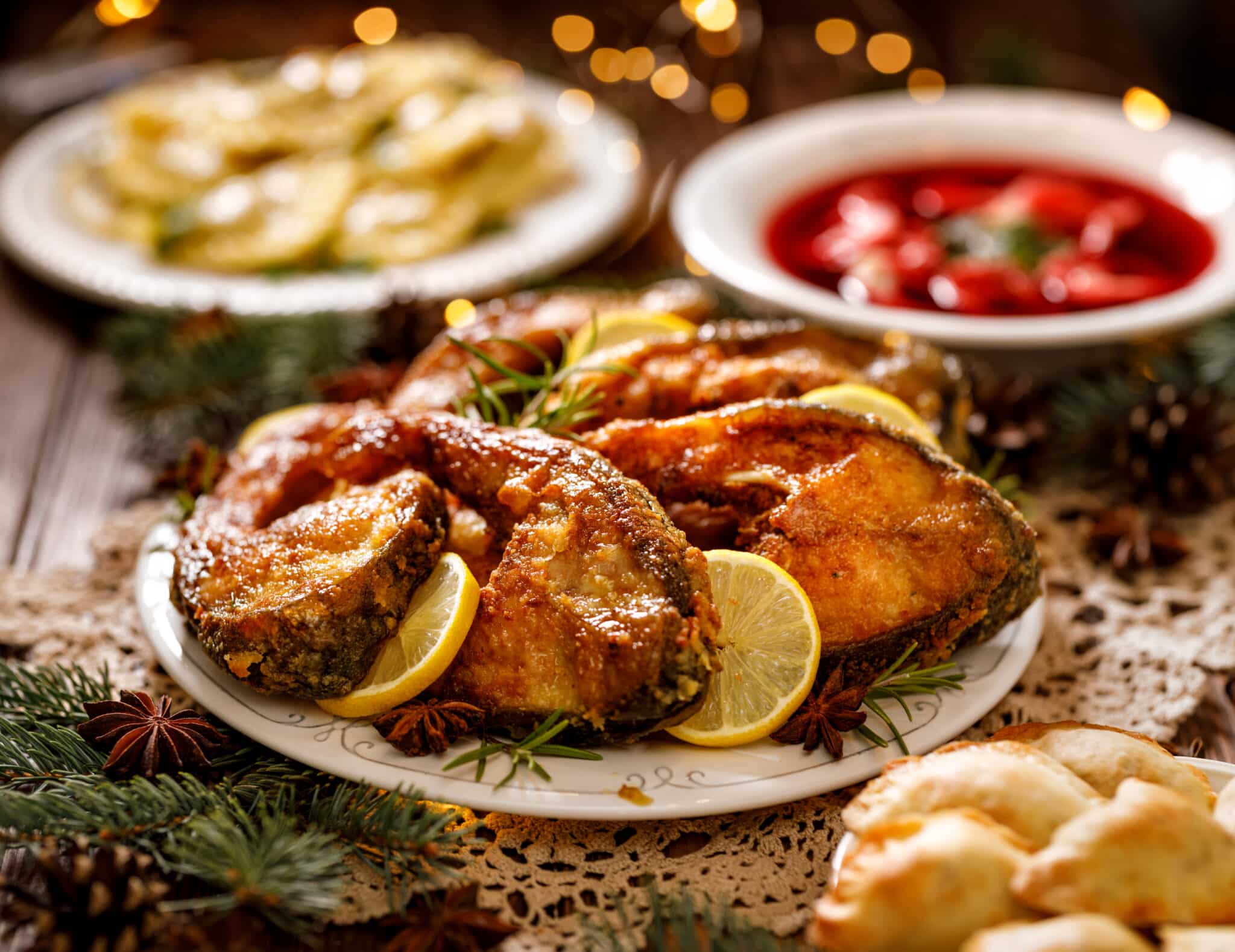
Wigilia: Polish Christmas Eve as a Reflection of History and National Identity
By the end of November, the cold cobblestone streets in Polish villages and cities are lined with Christmas markets selling traditional Polish cuisine, handcrafted souvenirs, and traditional amber handicrafts. Christmas is one of Poland’s largest celebrations. The main festivities occur over the course of three days from December 24 to 26. The 25th and 26th […]

Milk Bars: Warsaw’s Proletarian Food Culture
This is a quick introduction to Warsaw’s milk bars, which are important cultural institutions as well as great places to eat, and to the Polish food they offer and the Polish language needed to order in them. While English-speaking eating establishments can be found, they will typically be more expensive and less of an important […]
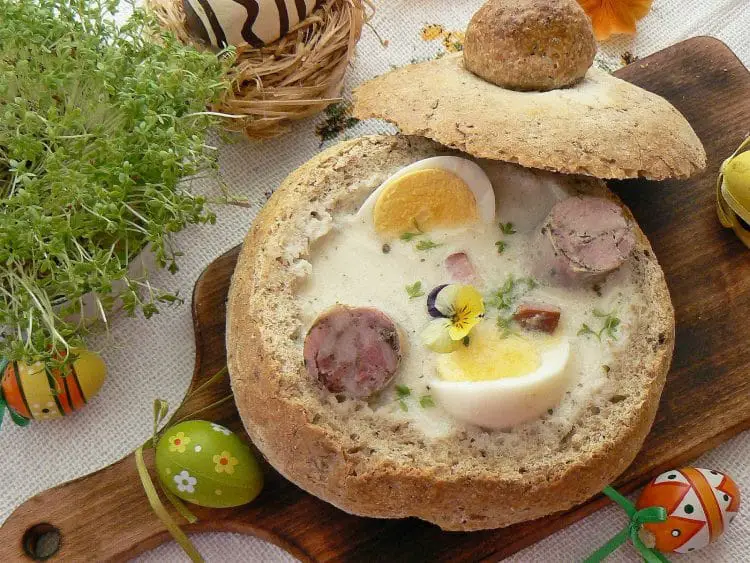
Żurek: The Soup that Makes a Man as Strong as a Wall
(The Soup that Makes a Man as Strong as a Wall: from the Old Silesian saying “Ze żuru, chłop jak z muru” (Literally: from żur, a man is like he’s made from wall) Żurek is a sour soup made from fermented rye flour with sausages, potatoes, eggs, and spices. It is popular across Poland in […]
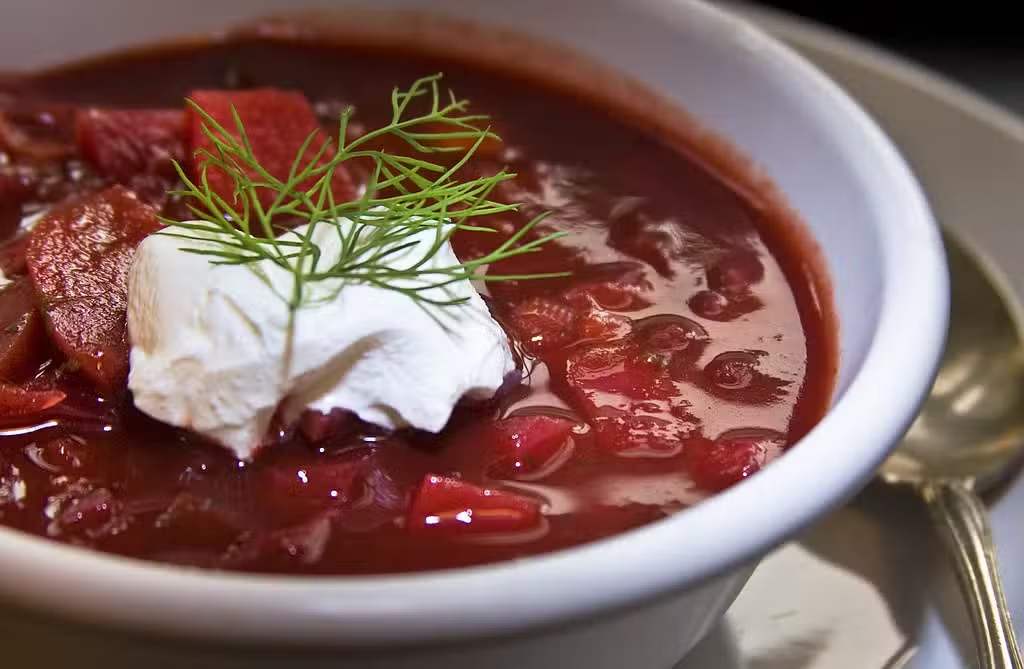
Borsch: The Slavic Signature Soup
Borsch (Борщ) is one of the most popular soups in Central and Eastern Europe and Northern Asia. It is sweet and sour, healthy and can be eaten at any time of year. It has a complicated and very long history, with the soup changing over time within various geographic regions. Today, the broadly recognized “standard” borsch […]
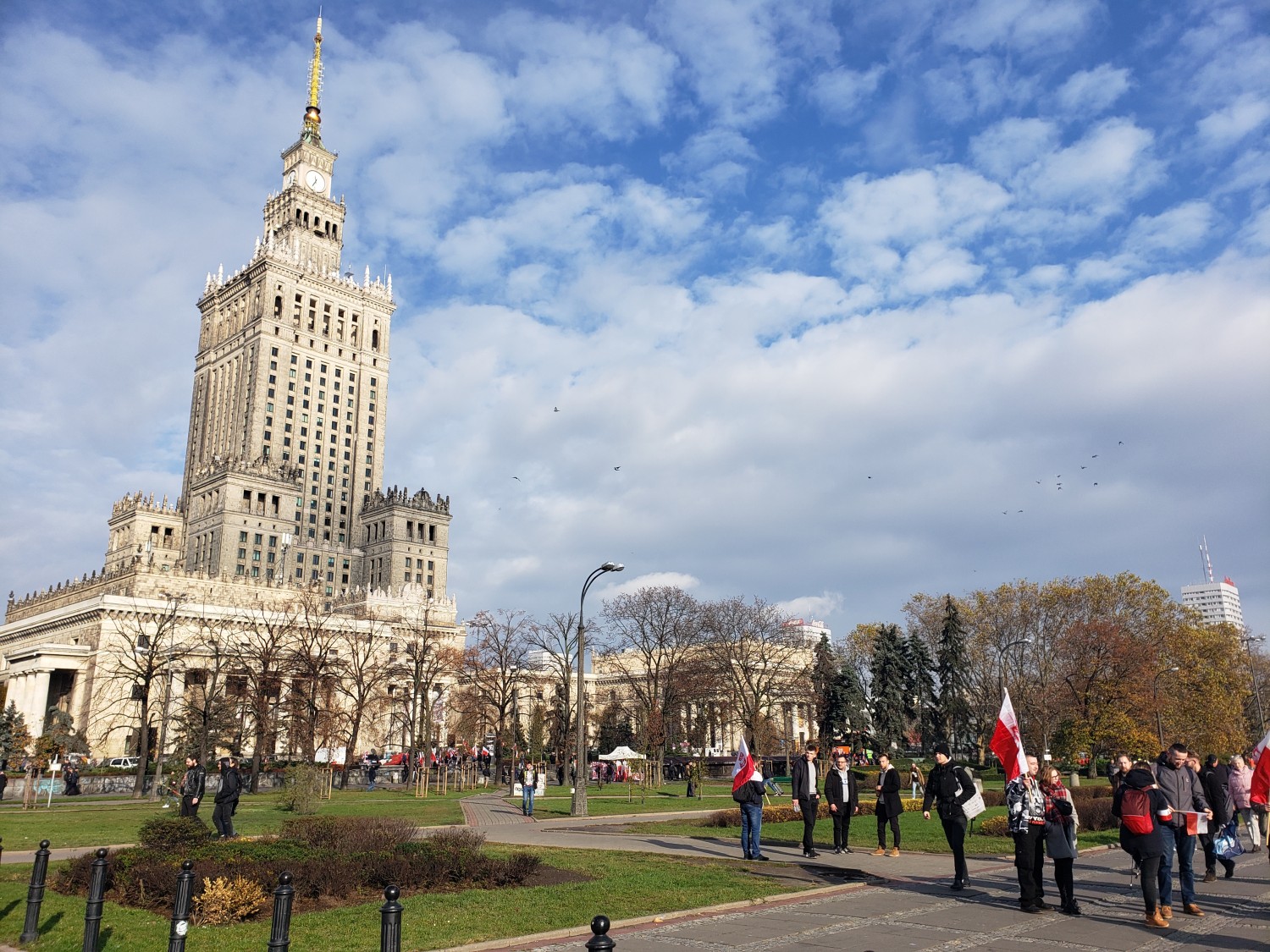
Polish Independence Day: Student Observations
Independence Day is celebrated in Poland on November 11th. Polish Independence Day commemorates the re-establishment of the state of Poland at the end of World War I in 1918. The holiday was abolished by the communists, but was instituted in 1989, after the fall of communism. Celebrations across the country include firework displays, concerts, and […]

